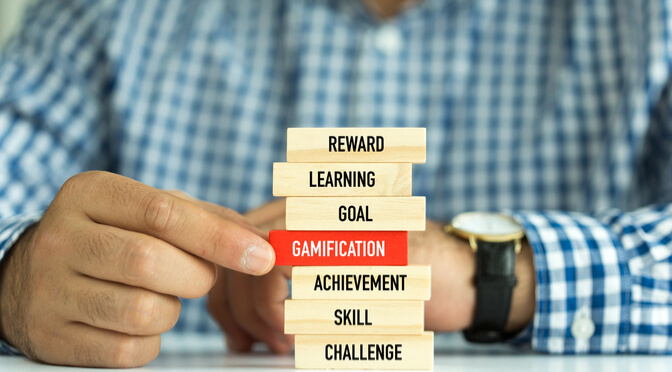Gamification is not a magic lamp. It won’t solve your problems overnight. But if you plan and use it well, it will serve its purpose.
Here are the 10 best practices which you can use while implementing gamification.
1.Identify the success criteria: Define success i.e. what you intend to achieve through the activity. It is important to know the parameters of a successful outcome. Without having a clear cut desired result, you can’t find out whether the activity was successful or not.
2. Consider alternatives: Always explore the alternatives. DO NOT jump the wagon. Many a times, people ignore simple and effective learning solutions just because they find a new trend catching up. Use gamification only if it makes sense and will add on to the activity. If you think the alternative is much more effective, use that!
3. Creating a tie-in to business needs: Any activity has to tie-in with the business goals. Make sure the gamification also does. Do not use gamification just to make your content interesting. It has no value if it does not push your business forward.
4. Create a story/context: We all love stories! Develop a story around your gamification activity. Tell people the context. Give them a purpose, a reason to interact with your content. Tell them why they are earning points, saving someone or conquering something.
5. Use science to advance learning: Remember the 2 mantras – Spaced Retrieval and Retrieval Practice. Spaced retrieval helps a learner retain access to the memorized information over long periods of time because it promotes a deeper understanding of the learned material. Retrieval practices encourage a learner to recall information rather than simply re-read or re-listen to it.

6. Make scoring and winning transparent: Make scoring easy! The learner should know how his actions are related to the scores. So, he will know exactly what he needs to do in order to be successful. Also, try different scenarios. Make sure you have covered up all the possible issues that could arise when a learner is doing the activity.
7. Keep the rules simple: Really simple! Avoid complexity. Always provide a tutorial so that the learner can learn the rules beforehand and perform better. This will also help you prevent any kind of frustration that a learner might develop due to lack of knowledge of the rules.
8. Keep leaderboards small: No one is really interested in the world rankings unless he’s up there. Keep the leaderboards customizable and personalized. The learner should be able to see his position, his friends’ position along with the top 5 performers.
9. Use levels and badges appropriately: Give the learner a goal and the number of levels he will need to complete before the learning is over. Badges can be tied to either levels or enabling objectives. Badges are also a good way to show off your prowess to your friends and colleagues.
10. Test your game before you release it: It is a good way to find flaws, cheats and shortcuts that you might have overlooked. Human Beings are the most creative and lazy people imaginable as we look for a better/faster way to achieve the same result.
Let us know if you have any more points to add to the list.


2 thoughts on “10 best practices to implement gamification”